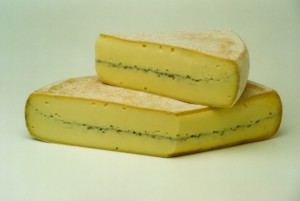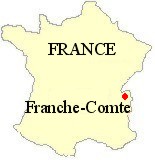
|
|
|||||
Morbier was originally made by mountain herdsmen in chalets in the foothills of the mountains of the Jura where their cattle grazed. Its production is now centred around the village of Morbier in the district of Saint-Claude. The cheese is distinctive in that it has a line of ash running through the centre. This is created when the cheese curds made with the evening milk are placed into cheese moulds, filling them half way, and then ash is sprinkled over the surface. Ash was originally taken from the cheese maker's fire and was sprinkled over the curd to protect it from insects. The curds from the morning milk are then spooned on top and then the whole mass is put in to linen-lined hoops which are then put into a press. The cheeses we sell at The Teddington Cheese are then matured for two to three months in a cool cellars at 12 to 14ºC and are turned regularly. The rind is a yellow-brown colour, moist and leathery. The paste is elastic, pale yellow in colour and tastes sweet. The early spring cheeses made with the winter milk are said to be the best but we find that the cheese is excellent throughout the year. At the Teddington Cheese we stock the traditional unpasteurised farmhouse Morbier. The majority of Morbier made today however, is mass-produced in large creameries and tends to be bland and odourless. Morbier can be enjoyed as part of a cheeseboard, in sandwiches or at the breakfast table. It can also be used in the same manner as Raclette - traditionally a half wheel would be propped up by a fire and then as it started to melt the cheese would be scraped onto crusty bread or hot potatoes. Morbier can be enjoyed with a Jura wine, for example Chardonnay Côtes de Jura. Each cheese is 30cm in diameter, 7cm thick, weighs 6kg and has a fat content of 45%. Click here or press your 'Back' button to return |
|
|||||
| All articles © www.teddingtoncheese.co.uk | ||||||
